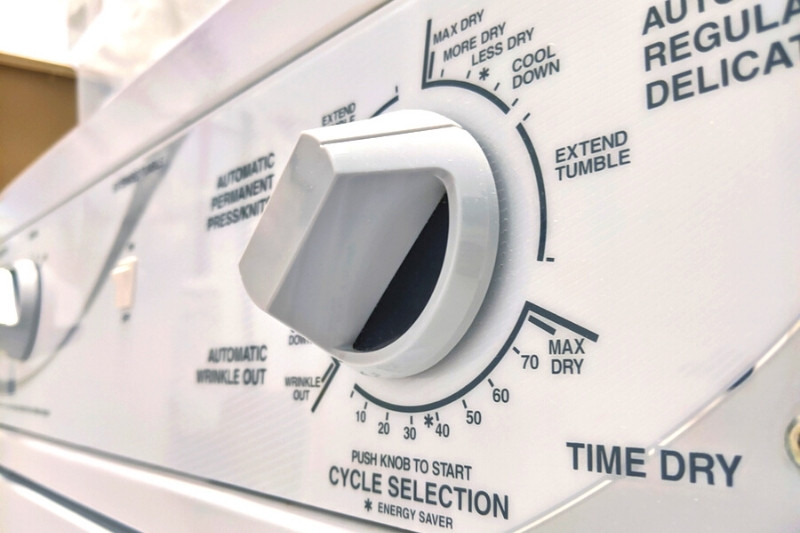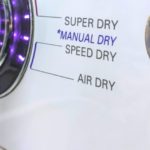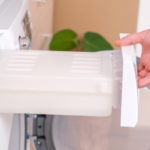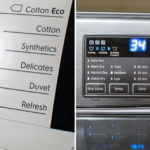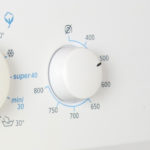Tumble drying is usually the quickest and most efficient ways to dry laundry, and it provides real convenience to the busy modern lifestyle.
Unlike air drying, when you tumble dry your laundry you have complete control over how long you dry it for and how much heat you use. In a tumble dryer, airflow and heat are used in tandem to dry clothes rapidly as they circulate around the drum.
Of course, not all types of fabric are suitable for tumble drying, so make sure you check the care advice before tossing them in.
But when you’re ready to tumble dry, you’ll need to know which setting to use. Let’s take a look at the lowest tumble dryer heat and what’s best for drying your items.
What Is the Lowest Heat Setting on a Tumble Dryer?
Different models of tumble dryers have different options, and this may include choosing how dry you want your items to be. You might also be able to specify whether the load is delicate, normal or heavy duty, or whether you’re looking for a quick dry.
However, the one setting that nearly all dryers have is the option to control the heat. You might see “tumble dry low” as a care instruction; this is a reference to using low heat.
You won’t need to specify the heat on a tumble dryer in the same way as a washing machine. Simply selecting “low heat” will be enough to ensure the dryer runs at a low temperature.
On a tumble dryer, a low temperature typically means 55°C/125°F. You won’t be able to reduce this as the dryer will automatically select the lowest possible heat when you pick the “low heat” setting.
You may also see an option for “tumble dry no heat”, and this means exactly what it says. No heat is used for the drying cycle; the items dry simply by air being rotated around the drum.
Depending on whether or not your dryer has a “no heat” option, the coldest setting is likely to be either 55°C or room temperature.
This isn’t an ideal cycle for drying, and is more often used to fluff up blankets and pillows, or refreshing items of clothing between washes where there is debris, hair or other dirt stuck to them.
Is Drying on Low Heat Better?
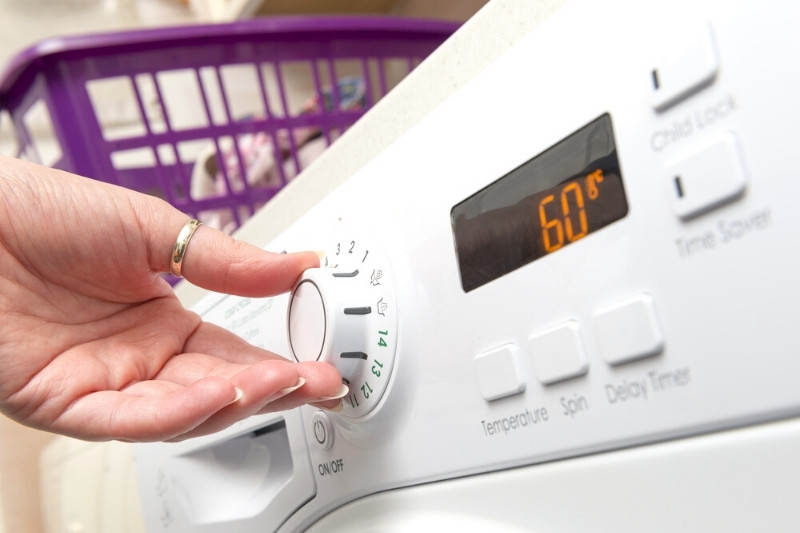
If you’re in a bit of a rush, the temptation to blast your wet laundry with the hottest possible tumble dryer cycle is hard to resist as it’s the fastest way to dry your clothes. Although your clothing may feel deliciously warm when first out of the dryer, that’s not enough to justify drying at a high heat.
Low heat settings will require the items to be tumbled for longer, but less heat will be used. As heat is more energy-hungry than tumbling, using a low heat will make your tumble dryer more energy-efficient.
Lots of heat can also damage fabrics, by weakening them or causing them to fade. You should therefore always use the least possible heat if you want your clothing to last as long as possible.
How to Tumble Dry Clothes More Quickly on the Low Heat Setting
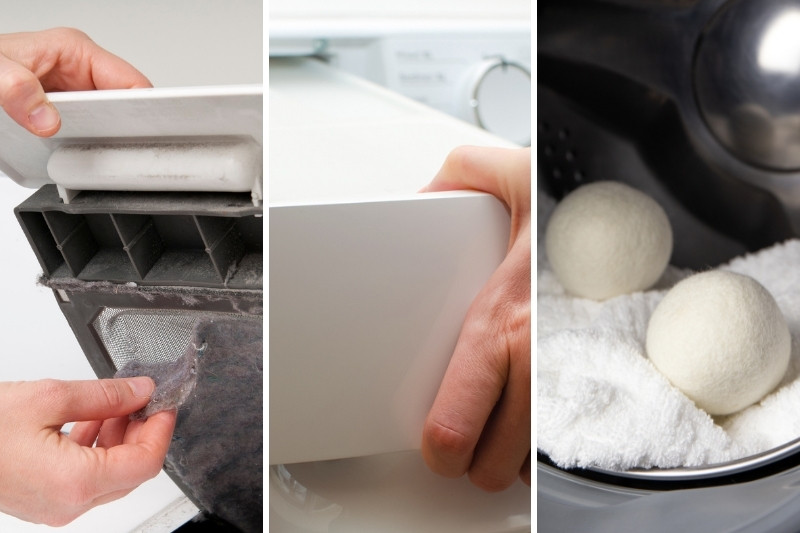
There are a few things you can do to ensure that your tumble dryer is operating at its optimum efficiency and dries your clothes as quickly as possible.
1. Clean the lint filter
Check the lint filter regularly as if this is blocked, your clothes will dry more slowly. It could also be a hazard and increase the risk of a fire so it’s important for several reasons.
2. Keep the drying sensor clean
You can also keep the drying sensor clean; if this is dirty your clothes may end up being over-dried. The sensor is usually located just under the door frame, inside the drum and is easy to wipe clean with a soft cloth.
3. Empty the reservoir (on condenser dryers)
If you have a condenser dryer, you may need to empty the reservoir. Some dryers do this automatically but others require manual emptying periodically.
4. Spin at high speeds in the washing machine first
When washing your clothes, spin them at the highest possible speed to wring out the maximum amount of water.
5. Don’t overload the dryer drum
When transferring to the dryer, don’t overload the drum as this will take much longer to dry.
6. Use dryer balls
Another tip which can cut the drying time is the use of dryer balls; these can slash drying times by around 20-30%.
They work by increasing the flow of hot air around the drum and as they’re reusable, they’re eco-friendly too.

In The Wash is your guide to the best laundry and cleaning products, tips and tricks. Our mission is to solve the UK’s cleaning and laundry dilemmas!
